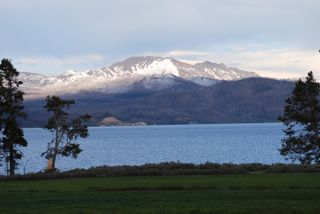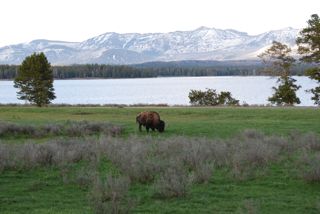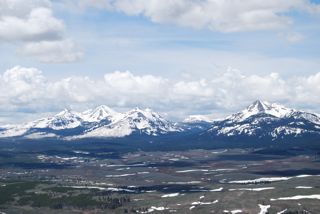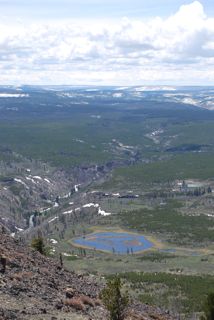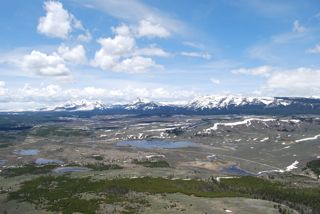 A view from the top of the Dana Plateau (photo by Beth Pratt)When naming spectacular places in the Sierra Nevada, Yosemite Valley or Mt. Whitney inevitably rise to the top of the list. While the entire region is filled with remarkable scenery, my favorite place in the Sierra, if not the world, is the sublime, ancient landscape of the Dana Plateau.
A view from the top of the Dana Plateau (photo by Beth Pratt)When naming spectacular places in the Sierra Nevada, Yosemite Valley or Mt. Whitney inevitably rise to the top of the list. While the entire region is filled with remarkable scenery, my favorite place in the Sierra, if not the world, is the sublime, ancient landscape of the Dana Plateau.
When exploring the Dana Plateau, located just outside the eastern border of Yosemite National Park on Tioga Pass, your feet walk on a land with remnants of terrain 25 million years old. The rock-filled plateau resembles a Martian landscape and presents an ancient geologic wonderland—the high alpine basin remained untouched by recent glaciations, and as a result, offers a rare glimpse of a landscape millions of years old. According to King Huber in his The Geologic Story of Yosemite National Park, “these upland surfaces have significance far beyond being unglaciated, because they are very ancient.”
On the northern end of the plateau, you can wander through fantastic rock gardens that have grown over millions of years. The oddly shaped granite boulders that inhabit the area act as aged sentinels who have endured an eon of winds, rains, snows, and sun that have shaped their unique character. Some rocks display distinct “weatherpans,” shallow depressions formed by water and erosion over thousands of years.
Mount Dana and its glacier also stand watch over the plateau and the adjacent Glacier Canyon. The Dana Glacier, one of about 100 active glaciers in the Sierra Nevada, is clearly visible on the northern slope of Mt Dana. Formed sometime during the Little Ice age (1450 to 1850), the glacier has lost a third of its size since 1883 as the result of the changing climate. On clear days the deep cerulean blue waters of Dana Lake reflect the sky and the mighty peaks that surround it.
Each visit to the Dana Plateau transports me back to a prehistoric time—indeed, during my visits I would not have been surprised to observe a pterodactylus extending its enormous wings as it soared over the waters of Dana Lake.
The magnificent landscape, although underscoring my insignificance in the greater scheme of things with its unavoidable reminder of the far-reaches of time, produces what I can only term a state of rapture. Or as John Muir said with much more eloquence, “Another glorious Sierra day in which one seems to be dissolved and absorbed and sent pulsing onward we know not where. Life seems neither long nor short, and we take no more heed to save time or make haste than do the trees and stars. This is true freedom, a good practical sort of immortality.”
For a short video of the Dana Plateau and a photo slideshow, see below:









